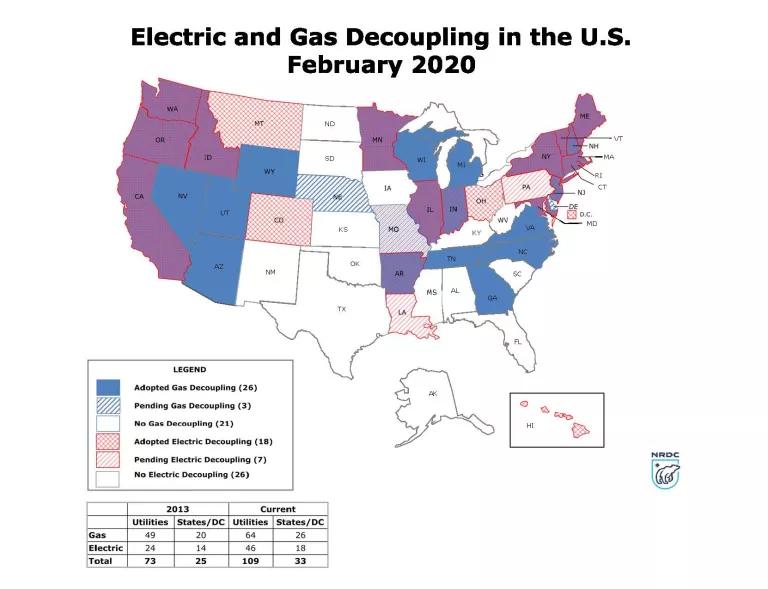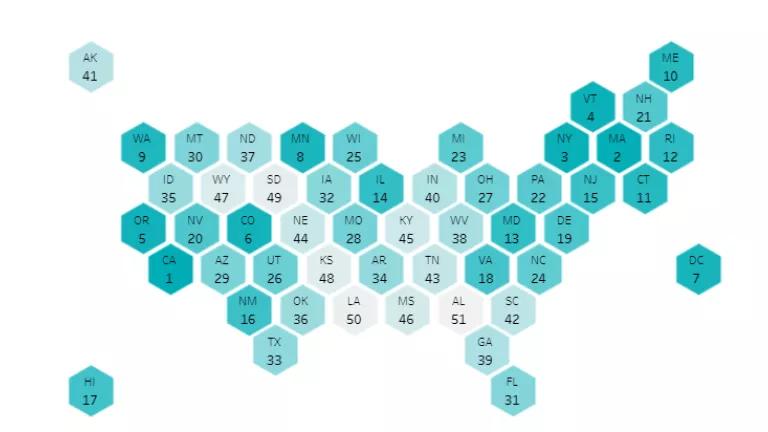Using energy more efficiently is the cheapest and cleanest way to serve America's energy needs. For instance, by making energy-saving improvements in buildings, processes, and devices served by America's electric and natural gas utilities, there's potential to save nearly $700 billion by 2020, as well as create jobs, and significantly reduce pollution. But, under traditional regulation, a utility that successfully helps its customers become more energy efficient risks not being able to cover its costs of serving customers and providing a return to investors.
Luckily, regulators of private utilities or governing boards of public utilities can solve this problem by implementing decoupling mechanisms, which use modest, regular rate reconciliations every year to compensate for under- or over-collection of fixed costs during the previous year. More than half the states have adopted decoupling mechanisms for either electric or natural gas utilities as a necessary (but not sufficient) part of the policies that allow utilities to invest in the cheapest and cleanest energy resource: energy efficiency.
Why It's Important to You
Utilities, together with their regulators or governing boards, are responsible for providing customers with reasonably-priced, reliable energy services. Energy efficiency is the cheapest, cleanest way for utilities to provide reliable service. But under traditional regulation, utilities are discouraged from investing in improved efficiency because it hurts them financially. Generally, utilities recover fixed costs through consumption charges. Therefore, when sales fall, utilities may not recover all their fixed costs, and when sales increase, utilities may collect more than their authorized fixed costs and reasonable return, creating windfall profits at customer expense.
This creates an incentive (often referred to as the throughput incentive) for utilities to work against energy efficiency despite policies promoting it. Customers lose in every scenario: if sales are higher than projected, they pay for windfall profits; if sales are lower, the utility can still recover its approved costs but has to go through a costly litigated regulatory proceeding to do so, which customers pay for. Regardless of whether sales go up or down, customers lose the economic benefits they would have enjoyed if their utility invested in cost-effective energy efficiency.
To remove this "throughput incentive," regulators or governing boards can decouple utilities’ recovery of fixed costs from sales. To implement a decoupling mechanism, regulators or governing boards set up a periodic automatic process to compare actual and authorized revenues and adjust rates accordingly. Years of experience in numerous states shows that decoupling eliminates the disincentive for utilities to help their customers become more energy efficient. As more states implement aggressive energy efficiency targets, regulators, governing boards and stakeholders should consider decoupling a necessary component of a policy package that will maximize energy and cost-savings for customers.
What NRDC and You Can Do About It
Decoupling has a powerful impact on a utility's incentives, but requires only a small change in the ratemaking process. However, decoupling alone will not necessarily turn a conflicted utility into one committed to capturing all cost-effective energy efficiency. Decoupling is part of a package of policies that leads to maximum energy efficiency success. Other critical policies for which NRDC is advocating include:
- Making cost-effective energy efficiency the highest priority energy resource and setting aggressive energy- and demand-saving targets to capture the full potential
- Allowing utilities timely recovery of prudently-incurred costs of delivering energy efficiency programs
- Providing performance-based shareholder incentives for investor-owned utilities to reward energy efficiency and ensure that investments in cost-effective energy efficiency opportunities are as attractive over time as alternative investments in generation and infrastructure
- Conducting independent evaluation, measurement, and verification of efficiency program impacts
- Ensuring that energy efficiency program portfolios comprehensively address all major energy uses by residential, business, and industrial customers, and include initiatives targeted to assist lower-income households
Decoupling Across the United States
In recent years, regulators around the country have increasingly adopted decoupling policies to support investment in energy efficiency. As the map below indicates, half the states in the nation now have policies to break the link between recovery of fixed costs and sales for natural gas and electric utilities.





